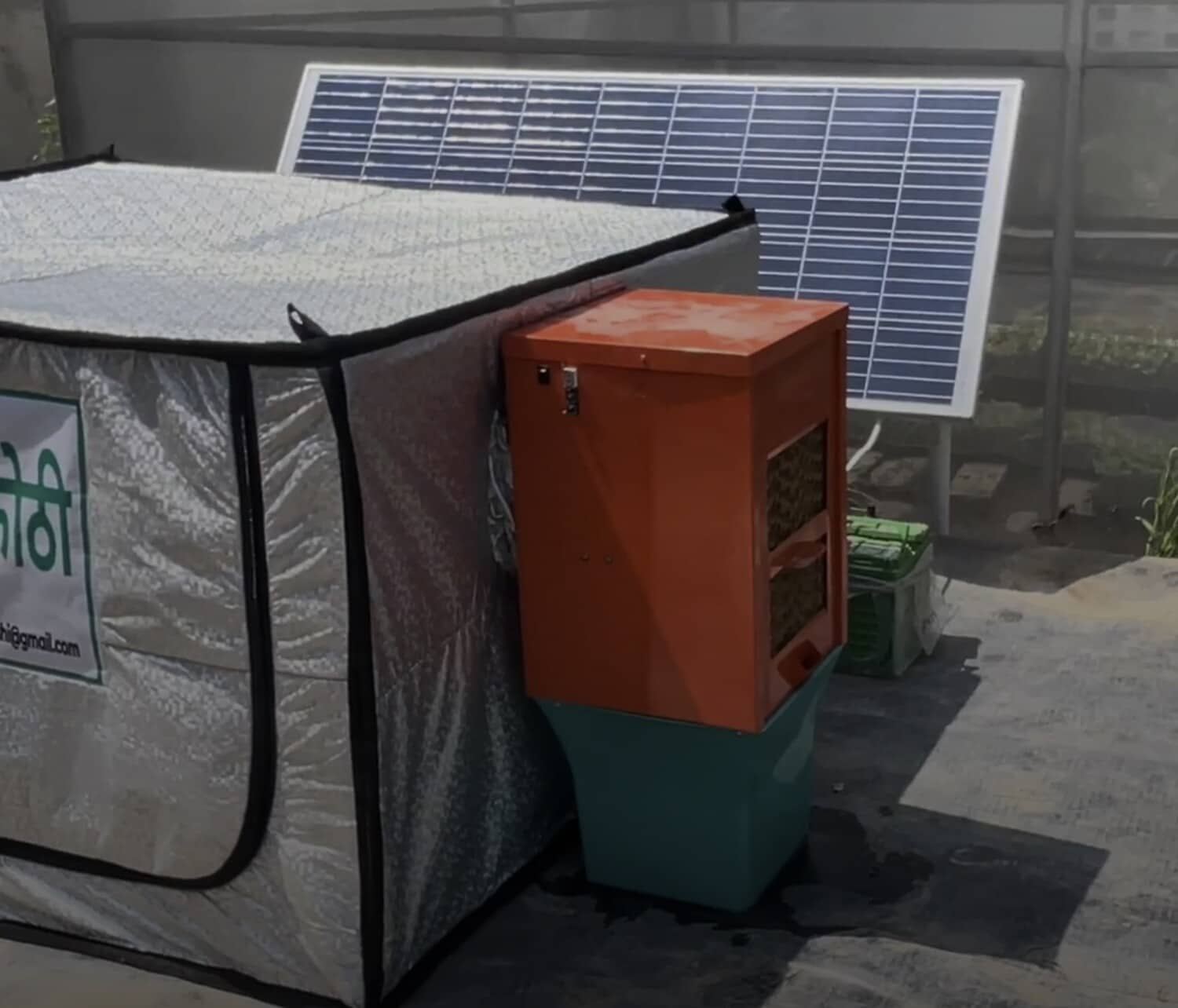
There is no limit on the ambitions of South Asia’s youth. Image: SHAPE South Asia, Jaipur Hub
- South Asia's greatest strength is its youth; its young people are rising through adversity and rewriting the region’s story.
- On International Youth Day, we spotlight stories of young changemakers across South Asia.
- The region’s long-term growth and stability depends on investing in unlocking sustainable opportunities for young people.
Sunita Dangol’s story didn’t begin with privilege or political lineage. Born in Kathmandu to a farming family from the historically marginalized Newar community, she was only able to complete her schooling thanks to a hard-earned scholarship.
Her drive shaped every step that followed. Dangol became the youngest member of Kathmandu’s city planning commission and soon joined the World Economic Forum's Global Shapers Kathmandu Hub, championing civic participation among young people.
At 29, she ran for Deputy Mayor of Kathmandu and won by the largest margin in the city’s elections.
This International Youth Day, 12 August 2025, under the theme Local Youth Actions for the SDGs and Beyond, we spotlight stories like Dangol’s, where young changemakers across South Asia are solving the region’s challenges, one city at a time.
South Asia: home to the world’s largest youth population
South Asia may be the fastest-growing region in the world, but its greatest strength lies not in its GDP, but in its youth, who are rising through adversity and rewriting the region’s story.
Home to the world’s largest youth population, this demographic is often framed as a 'dividend' waiting to be unlocked.
But GDP gains alone don't define a demographic dividend; success will be measured by how effectively we translate this potential into visible youth leadership across politics, business and civil society.
A platform for mobilizing youth potential
Faced with some of the most defining challenges of the 21st century – climate change, unemployment and political disenchantment – young people in South Asia are not waiting for institutions to respond.
They are stepping up to lead change. They're entering public office, launching innovative ventures, building climate adaptation infrastructure and activating intergenerational collaboration.
In the Global Shapers Community, a global network of young people driving social impact, South Asians are the third largest group based in over 70 Hubs across Bangladesh, Bhutan, India, the Maldives, Nepal, Pakistan and Sri Lanka.
New opportunities for youth, by youth
According to the International Labour Organization (ILO), one in four young people in South Asia are identified as ‘NEET’ (not in education, employment or training), representing a growing segment of youth disconnected from opportunity.
To address this, the Ahmedabad Hub launched Project Accelerate: Skills, Set, Go to close the gap between education and employment. Recognizing that formal education alone is insufficient for thriving in today’s competitive job market, the initiative provides targeted skills training.
“We started this initiative with a simple belief, talent is universal, but opportunity is not,” shares Krunal Shah, from the project team.
Partnering with the United Nations Development Programme (UNDP), IBM and the United States Department of State, the Hub designed training modules and certification programmes and forged partnerships to scale its interventions. “Young people who participated began to not only dream again but act. They were getting jobs, internships and a sense of clarity,” says Shah.
So far, the project has equipped over 230,000 young people with future-ready skills and helped over 700 secure a job.
Have you read?
- How Asia's governments are helping workers reskill for the future
- Access and equity: How technology tools are helping South Asians learn new skills
- What we learned about the future of work in Asia at AMNC25, and other trends in jobs and skills this month
Building resilience in climate hotspots
Positioned between the climate-sensitive geographies of the Himalayas and the Indian Ocean, South Asia is one of the world’s most environmentally vulnerable regions. The World Economic Forum's Global Risks Report identifies extreme weather as the region’s top concern for the next decade.
Yet, while global leaders debate emissions targets, youth on the ground are already responding with urgency.
In the Dhaka Hub, Global Shapers launched Treelionaire to reforest their city. Today, it has grown into a region-wide movement, spanning 27 cities across South Asia. Over 10,000 trees have been planted so far.
In the Peshawar Hub, Global Shapers are working on climate education and adaptation. Their initiative ClimaSynth simplifies climate data and delivers it through an AI-powered chatbot, a carbon calculator and educational tools. With plans to scale regionally over the next three years, ClimaSynth aims to convert thousands into climate-literate citizens.
“We’re not just raising awareness, we’re equipping people to act,” says Ubaid Ullah, from the project team, who is also working at Pakistan’s Ministry of Climate Change and Environmental Coordination.
These interventions show how local action is evolving into scalable, regional climate solutions, led by youth who are not just concerned, but actively building the infrastructure to cope with climate change.
- How is the World Economic Forum advancing the digital economy in ASEAN countries?
The Centre for Regions, Trade and Geopolitics at the World Economic Forum, with support from the ASEAN Korea Cooperation Fund and in collaboration with the ASEAN Secretariat and ASEAN Member States, is supporting ASEAN’s Digital Economy Framework Agreement (DEFA) through the ASEAN Digital Economy Agreement Leadership (ASEAN DEAL) project.
As one of the world’s fastest-growing internet markets, Southeast Asia’s digital economy is projected to nearly triply by 2030, expanding from $300 billion to close to $1 trillion. However, achieving this growth faces challenges due to differences in development levels, regulatory capacity, infrastructure, and digital skills across the region. ASEAN DEFA aims to overcome these barriers and set a path towards a more inclusive and sustainable digital economy in ASEAN.
Through ASEAN DEAL, the World Economic Forum is supporting ASEAN DEFA with the following key activities:
- Online Depository of Digital Economy Agreements: An interactive online depository of digital economy agreements and free trade agreements relevant to the digital economy, designed to allow comparison and analysis of relevant provisions. It aims to simplify complex digital economy agreements and enable informed policy decisions and negotiations.
- Annual Business Survey and Dialogue: An annual survey collects insights from business leaders on key areas including digital trade, electronic transactions, electronic authentication, digital payments, intellectual property rights and competition policy in ASEAN. The key findings from the survey are presented and discussed at annual dialogues with ASEAN policymakers, business leaders, academia and civil society.
- Capacity Building for ASEAN DEFA Negotiators: Workshops and roundtables for ASEAN DEFA negotiators provide insights on current digital economy agreements and best practices from various jurisdictions, helping negotiators strengthen their knowledge and stay updated on global developments.
For more information and updates, visit www.asean-deal.org
Digital inclusion in rural areas
With a large proportion of South Asia’s population residing in rural areas, one of the region’s main challenges is: how do we ensure rural communities aren't left behind in a rapidly digitalizing world?
In Rajasthan, the Jaipur Hub saw this exclusion firsthand with limited connectivity, lack of digital literacy and language barriers.
Inspired by the AI for India 2030 initiative, it launched GramIN Tech Adoption Centres to bridge the rural digital divide. These centres bring voice-enabled AI tools, solar-powered digital literacy spaces, use of satellite data for drought and flood tracking, telemedicine and market access directly to underserved rural villages, adapted to local languages.
Similarly, the Dehradun Hub launched Project Zaraat to support smallholder farmers.
“Zaraat was born out of a simple, but urgent realization that agriculture in India, despite being the backbone of our economy, remains underserved by innovation. My personal motivation stemmed from time spent on the ground, witnessing how smallholder farmers suffer post-harvest losses, not due to lack of effort, but due to missing infrastructure that fits their realities,” recalls Zaraat’s lead, Manan Batra.

By introducing affordable solar-powered cold storage units with a pay-as-you-store model, the project supports over 500 smallholder farmers across three states in India and has led to a 60% reduction in post-harvest losses and a 25% increase in farmer incomes.
“My goal is to help reimagine agritech not as a top-down intervention, but as a collaborative, ground-up movement by and for rural communities to own, adapt and thrive”— Manan Batra, Lead, Project Zaraat
The digital revolution in South Asia had always risked bypassing rural areas, but these young innovators are proving that there is no excuse for exclusion.
Youth at the heart of South Asia’s political landscape
Politics in South Asia has long been dominated by older generations. The average age of Members of Parliament in India is 56-years-old; in Sri Lanka, only four out of 212 MPs are below the age of 30; and in Pakistan, only seven out of 311.
This disconnect is not just about numbers, it hints at the fact that political office is still out of reach for many.
This article began in Kathmandu, so it is fitting that we return there to close the loop.
In response to the enduring exclusion of youth in politics, Shaping Political Futures by the Kathmandu Hub is a political leadership accelerator, training over 200 of the next generation of Nepal youth civic actors to engage with politics.
“I chose to contest elections in Nepal’s male- and age-dominated arena because politics is the most powerful platform to serve society and drive meaningful change. Winning proved that leadership can be earned by youth who dare to act,” shares Dangol.
“I call on South Asia’s youth to step forward, contest elections and bring fresh energy, bold ideas and unwavering integrity to our parliaments and councils to transform our democracies and build a brighter future for all—Sunita Dangol, Deputy Mayor of Kathmandu”— Sunita Dangol, Deputy Mayor of Kathmandu
Setting South Asia’s youth up for success
South Asia’s youth stand at a critical crossroads. In the face of daunting challenges, young people are stepping up with entrepreneurial solutions grounded in equity and collaboration and a growing appetite for civic participation.
The region’s long-term growth and stability depends on investing in infrastructure and institutions and on unlocking sustainable opportunities for young people. Without this, South Asia risks slowing down its momentum and leaving this bright generation behind.



